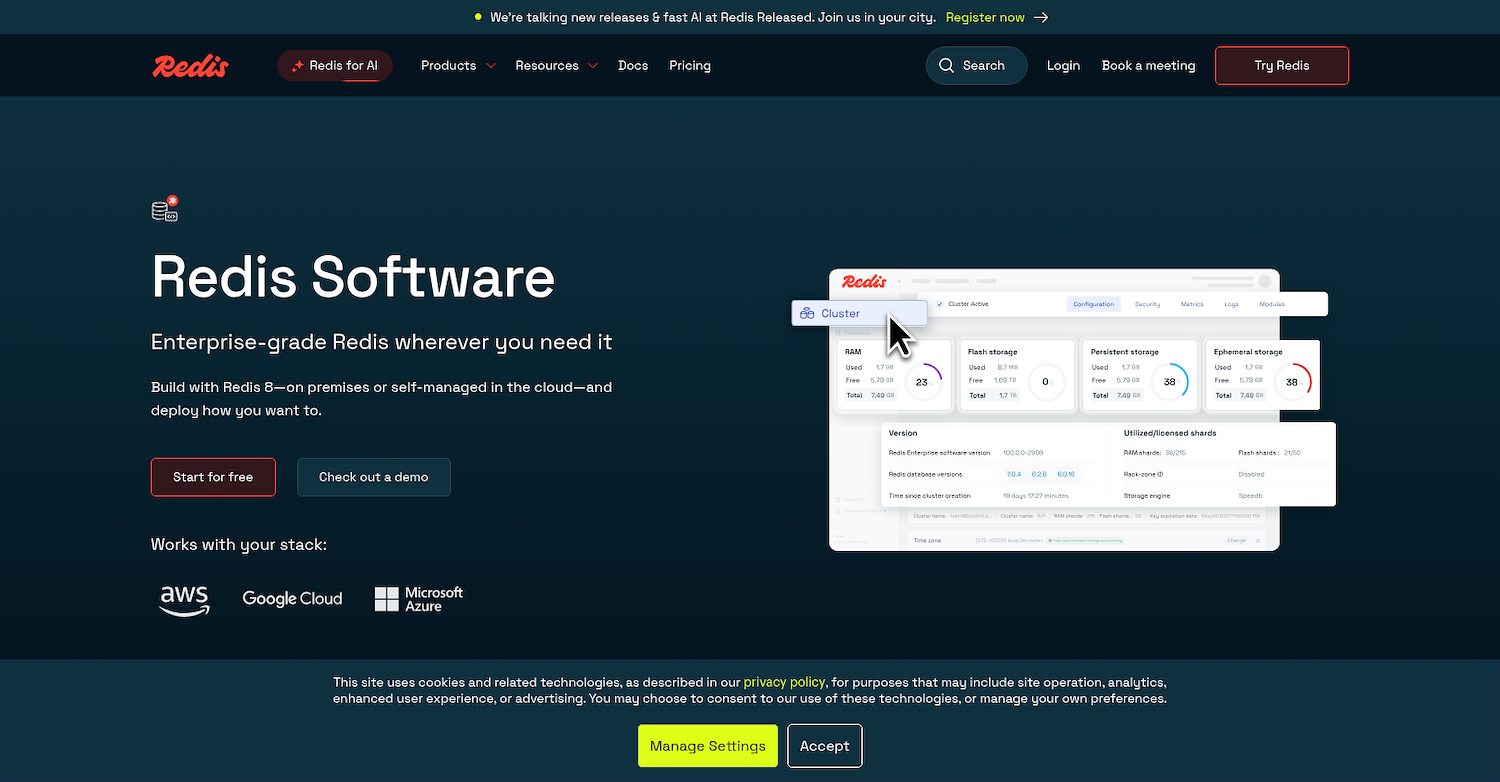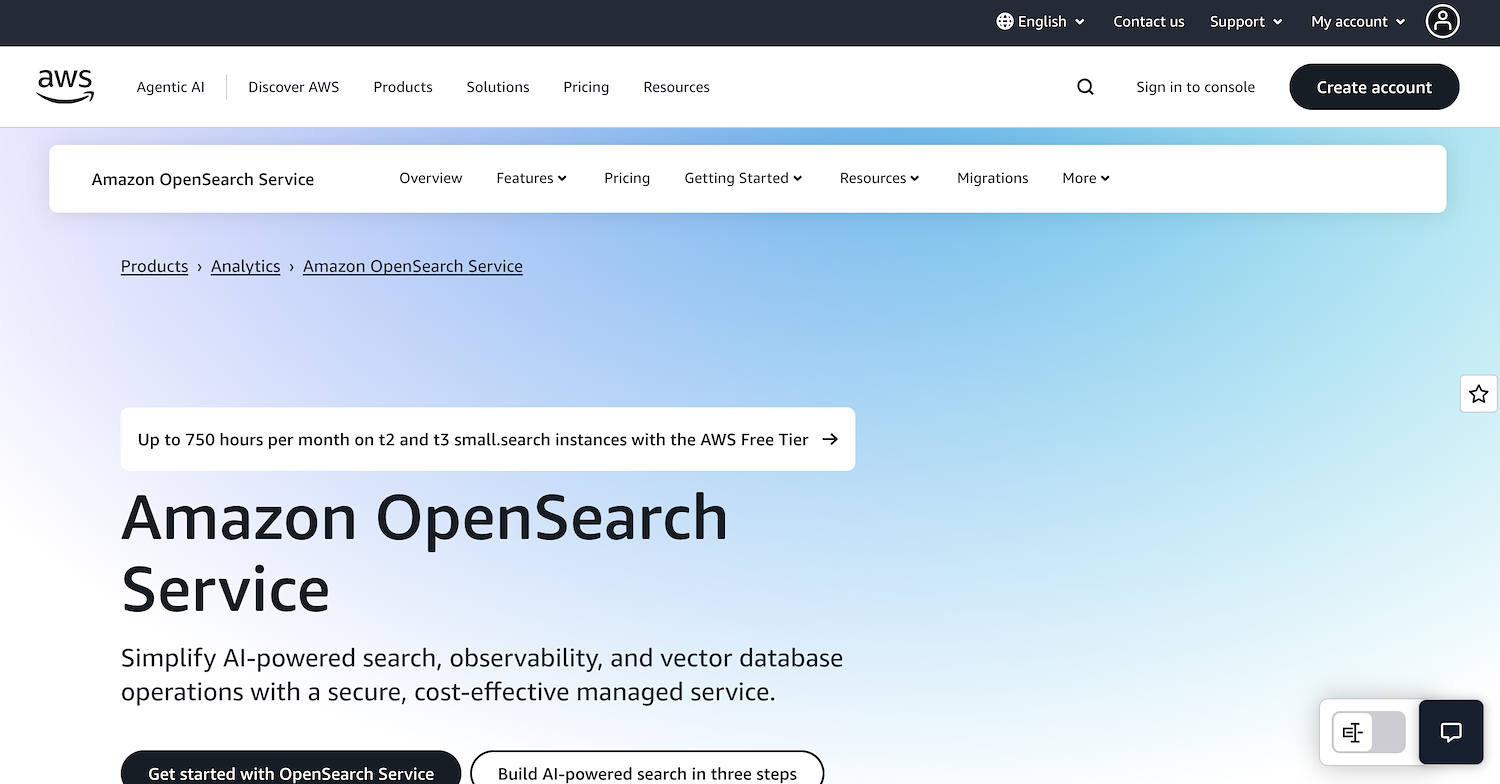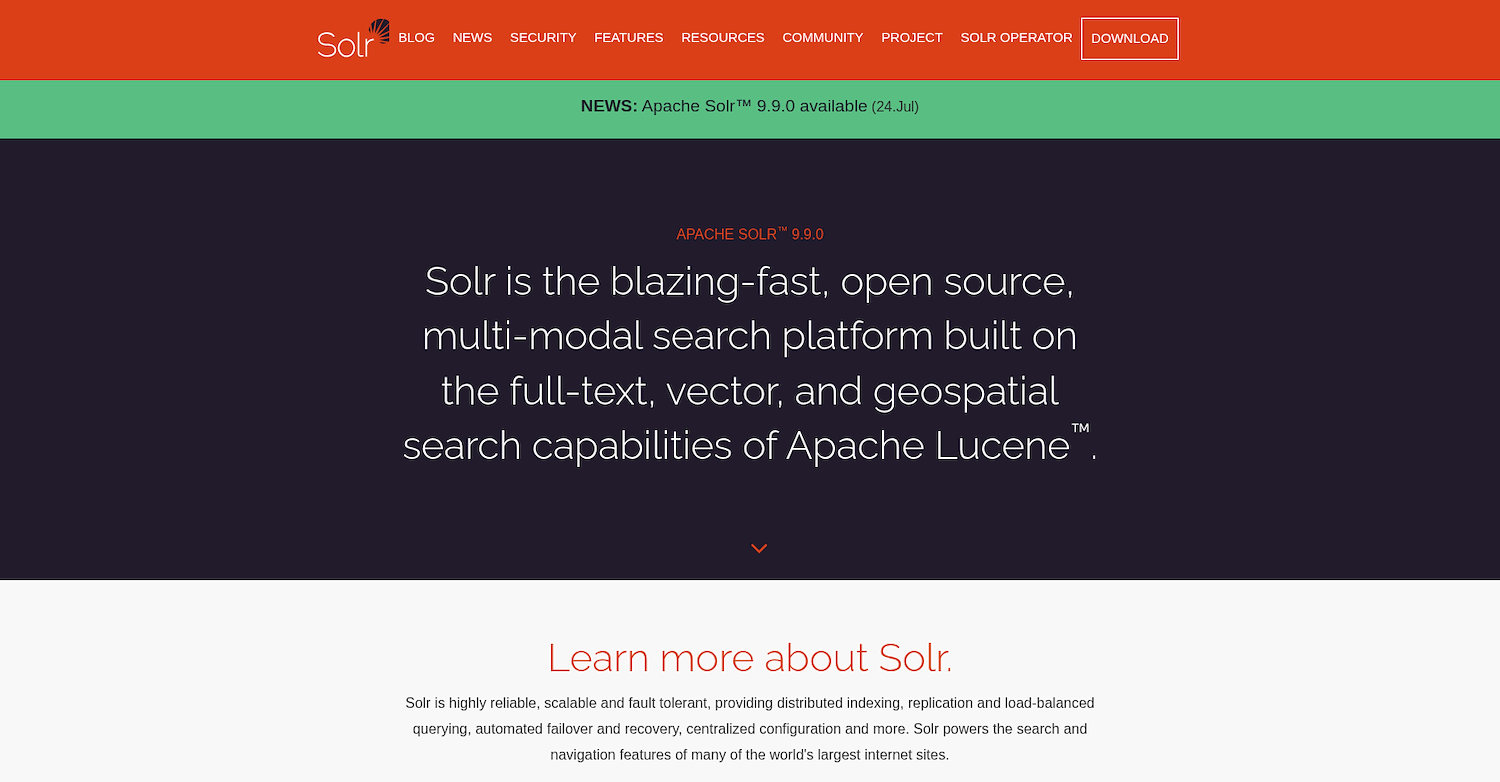Relevance AI Alternatives
A direct comparison of 10 Relevance AI alternatives. We analyze features and pricing to help you find a suitable replacement.

Many teams use Relevance AI to build custom AI agents for specific jobs, like sales or research. The platform works well for this because its no-code approach lets non-technical users create automations without needing developers, which is a clear strength.
However, some users note drawbacks like its cost and a potential learning curve. For this reason, we analyzed the best alternatives based on G2 reviews to help you shortlist other options for a deeper look. Let's get started.
1. 11x for Sales Automation
Consider 11x if you need digital workers for your sales team. The platform provides automations for outbound activities like lead research and initial outreach, which can support your sales development representatives.
11x is a GTM platform that uses AI agents to manage the sales process. One agent, Alice, finds prospects and handles outreach, while another, Julian, qualifies inbound leads and books meetings.
The platform unifies data enrichment, outreach, and email warmup functions. This consolidation can replace the need for multiple, separate tools within a GTM stack.
Relevance AI Alternatives
The following sections provide a detailed review of each alternative. We cover their main features, pricing, and how they compare to Relevance AI in terms of advantages and potential drawbacks.
1) Pinecone

Pinecone is a serverless vector database for production AI. It delivers low-latency vector search for applications like Retrieval-Augmented Generation (RAG), AI agents, and semantic search. Companies use it to create systems that answer questions from internal knowledge bases or to build recommendation engines.
Pinecone's Main Features
- Deploys in a serverless environment that automatically scales resources with workload demand.
- Includes an advanced search stack with metadata filters, real-time indexing, and full-text keyword search.
- Supports hybrid search by combining dense and sparse vectors to deliver more accurate results.
- Provides enterprise-grade security with data encryption and private networking, and is compliant with SOC 2, GDPR, and HIPAA.
How Pinecone Compares to Relevance AI
Average Review score: 4.6/5 stars based on 36 G2 reviews.
- Pinecone functions as a specialized vector database that gives developers deep control over their AI application's data layer. In comparison, Relevance AI is a no-code platform that manages the technical infrastructure for the user.
- The tool serves developers who require a high-performance vector database to build features like semantic search. This focus differs from Relevance AI, which provides a no-code interface for business users to create AI automations.
- Its serverless design automatically scales resources based on workload, a feature suitable for applications with variable demand. This offers a more flexible infrastructure model than the managed environment of the Relevance AI platform.
- Support for hybrid search combines different vector types to deliver more accurate results. This allows for more granular search adjustments than the pre-set agent tools inside Relevance AI.
Potential Drawbacks of Pinecone
- Pinecone requires coding knowledge to implement, which makes it less suitable for business users without developer support. Relevance AI, in contrast, offers a no-code platform for building automations.
- The tool functions as a specialized vector database, not a complete agent-building platform. This means users need other tools to create full automations, unlike the all-in-one environment of Relevance AI.
- Some users note that building integrations can be difficult and documentation is sometimes light. This can present a challenge for teams that need a more guided setup, which Relevance AI provides.
Pricing and Cost-Effectiveness
Relevance AI has fixed monthly plans, including a Team plan at $199 per month and a Business plan at $599 per month. Pinecone appears to follow a usage-based serverless model, which some users find affordable for startups, while others note it can be steep for smaller projects.
2) Weaviate

Weaviate is an AI-first vector database for developers to build and scale AI applications. It combines storage, search, and machine learning functions into one platform. Teams use it for Retrieval-Augmented Generation (RAG) to ground chatbots in private data and to create autonomous AI agents.
The platform supports serverless, dedicated cloud, or a customer's own cloud environment. It offers enterprise security options like SOC 2 and HIPAA compliance.
Weaviate's Main Features
- Integrates an embedding service that removes the need for an external model host.
- Supports hybrid search to query vectors, text, or a weighted combination of both.
- Offers multiple deployment options, including serverless, enterprise cloud, and a bring-your-own-cloud model.
- Provides language-agnostic SDKs for Python, Go, and TypeScript/JavaScript, along with GraphQL and REST APIs.
How Weaviate Compares to Relevance AI
Average Review score: 4.6/5 stars based on 28 G2 reviews.
- Weaviate offers flexible deployment options like on-premises or bring-your-own-cloud. This gives teams more control over their infrastructure compared to Relevance AI's fully managed platform.
- It is designed for developers and provides SDKs for multiple programming languages. This allows for deeper technical customization than Relevance AI's no-code interface, which is made for business users.
- The tool has a free, self-deployed open-source version. This provides a cost-effective starting point for development teams, unlike Relevance AI's subscription-based plans that have a fixed monthly cost.
- Its integrated embedding service removes the need for an external model host. This offers a more streamlined developer experience for vectorization compared to the pre-set agent tools inside Relevance AI.
Potential Drawbacks of Weaviate
- Weaviate is built for developers and requires coding skills to set up and manage. This makes it less accessible for business teams compared to Relevance AI's no-code interface for building automations.
- The tool functions primarily as a vector database, not a complete agent-building platform. Users may need additional tools to create full AI automations, unlike the all-in-one environment that Relevance AI provides.
- Some users note a steep learning curve and scattered documentation, which can slow down the initial setup. This might be a challenge for teams that prefer the more guided experience of the Relevance AI platform.
Pricing and Cost-Effectiveness
Weaviate provides a lower-cost entry with its Serverless Cloud plan starting at $25 per month, while Relevance AI's first paid tier is $199 per month. Weaviate also has a free, self-deployed option, which may suit technical teams. For the most current pricing, visit Weaviate's official website.
3) Qdrant

Qdrant is an open-source vector database built in Rust. It lets AI teams manage high-dimensional vectors for applications like retrieval-augmented generation (RAG) and semantic search. The platform supports various deployment models, including self-hosted, managed cloud, and private-edge options.
Teams use it to power recommendation engines, anomaly detection, and AI agents that need to retrieve information.
Qdrant's Main Features
- Offers built-in vector compression and offloads data to disk to reduce RAM consumption.
- Uses a core written in Rust to deliver low-latency queries for large-scale vector handling.
- Combines vector similarity with structured metadata filters for more precise data retrieval.
- Supports text, image, and sparse vectors and integrates with major AI frameworks.
How Qdrant Compares to Relevance AI
Average Review score: 4.5/5 stars based on 12 G2 reviews.
- Qdrant is an open-source vector database built for developers, offering deep technical control. This differs from Relevance AI, which is a no-code platform designed for business users to build automations without writing code.
- The tool provides flexible deployment options, including self-hosting and private-edge models. This gives technical teams more control over their infrastructure compared to Relevance AI's fully managed cloud platform.
- It uses a core written in Rust and offers features like vector compression to reduce RAM usage. This focus on performance is suited for large-scale AI applications, whereas Relevance AI manages performance for the user in its no-code environment.
- As an open-source platform, Qdrant allows developers to modify the codebase for specific needs. This level of customization is not available on Relevance AI's proprietary platform.
Potential Drawbacks of Qdrant
- Qdrant requires coding skills to use, which presents a challenge for non-technical teams. In comparison, Relevance AI offers a no-code interface designed for business users to create automations directly.
- Its user interface is limited and requires writing code for many operations. This differs from Relevance AI, which provides a complete visual environment where users can build and manage AI agents without queries.
- Some users note a steep learning curve and a lack of built-in visualization tools. This can make setup and analysis difficult compared to Relevance AI's guided, visual platform for managing automations.
Pricing and Cost-Effectiveness
Qdrant offers a free, open-source version, providing a cost-effective option for technical teams, unlike Relevance AI's fixed monthly plans starting at $199. While pricing models for managed plans can vary significantly between tools, we recommend visiting Qdrant's official website for the most accurate and up-to-date information.
4) Milvus

Milvus is an open-source vector database for AI applications. It stores, indexes, and manages large sets of embedding vectors from machine learning models. The platform supports applications that need similarity search across massive datasets.
Common uses include image search, natural language processing, and recommender systems. Teams also use it for chatbot development, which can support AI sales development representative functions.
Milvus's Main Features
- Offers multiple deployment options, including a lite library, a standalone server, and a distributed cluster, to scale from prototype to production.
- Supports rich query capabilities like vector similarity search, hybrid search with metadata filtering, and multi-vector queries.
- Provides integrations with major AI frameworks such as LangChain, LlamaIndex, and OpenAI.
- Scales elastically to tens of billions of vectors with minimal performance loss.
How Milvus Compares to Relevance AI
Average Review score: 4.7/5 stars based on 8 G2 reviews.
- Milvus handles over a billion vectors, making it suitable for massive AI applications. This level of scalability is designed for developers, while Relevance AI manages its infrastructure for non-technical users.
- As an open-source tool, it allows developers to modify the codebase for specific needs. Relevance AI is a proprietary platform and does not offer this level of deep customization.
- The tool offers flexible deployment from a lite library to a distributed cluster. This gives technical teams more infrastructure control compared to Relevance AI's fully managed cloud platform.
- Its free, open-source version offers a cost-effective entry point for technical teams. In contrast, Relevance AI's pricing starts with a fixed monthly subscription plan.
Potential Drawbacks of Milvus
- Milvus is built for developers and requires coding skills, which some users note creates a steep learning curve. This is different from Relevance AI's no-code platform, which is designed for business users.
- Its user interface is developer-focused and may lack the visual workflow tools for building automations. In comparison, Relevance AI offers a complete visual environment to create and manage agents without writing code.
- The tool's setup, particularly in a distributed environment, can be complex according to some reviews. This contrasts with Relevance AI's fully managed platform, which does not require users to handle infrastructure configuration.
Pricing and Cost-Effectiveness
Milvus offers a free, open-source version, which provides a cost-effective option for technical teams. In contrast, Relevance AI has fixed subscription plans starting at $199 per month, which include a fully managed, no-code environment.
5) Elasticsearch

Elasticsearch is a distributed search and analytics engine. It powers a broad range of use cases, from application search and security analytics to log analysis. The platform also supports vector search capabilities for modern AI applications.
Developers use these functions to build features like semantic search and recommendation systems. These tools can support sales and customer service teams with data discovery and analysis.
Elasticsearch's Main Features
- Functions as a unified platform that combines search, security analytics, and observability.
- Includes a security analytics suite with SIEM, threat research feeds, and ransomware protection.
- Provides an observability suite for log analysis, application performance monitoring, and real-user monitoring.
- Named a Leader in the 2025 Gartner Magic Quadrant for Observability Platforms.
How Elasticsearch Compares to Relevance AI
Average Review score: 4.3/5 stars based on 201 G2 reviews.
- Elasticsearch provides built-in analytics and visualization tools that let non-technical teams adjust search experiences. This offers more direct control over search performance compared to the managed environment of Relevance AI.
- It functions as a unified platform that combines search, security analytics, and observability. This scope is broader than Relevance AI, which focuses on building AI agents for specific automations.
- The tool supports flexible deployment options, including on-premise and hybrid models. This gives technical teams more infrastructure control than Relevance AI's fully managed cloud platform.
- Users can bring their own open or proprietary models for inference. This allows for a higher degree of customization for industry-specific results compared to the pre-set agent tools within Relevance AI.
Potential Drawbacks of Elasticsearch
- Elasticsearch requires technical expertise for setup and management, which can be a challenge for business teams. In contrast, Relevance AI offers a no-code interface designed for non-technical users to build automations directly.
- The tool functions primarily as a search and analytics engine, not a complete agent-building platform. This means users might need other tools to create full AI automations, unlike the all-in-one environment that Relevance AI provides.
- Some users note that its user interface is developer-focused and may lack the visual workflow tools for building automations. This is different from Relevance AI, which provides a complete visual environment to create and manage agents without writing code.
Pricing and Cost-Effectiveness
Elasticsearch provides a more affordable entry point with its Standard plan at $79 per month, compared to Relevance AI's first paid tier at $199 per month. Both platforms offer a plan at the $199 price point, but Relevance AI also includes a free tier for users to start with.
Consider 11x for Sales Automation
If your focus is sales automation, 11x offers digital workers for outbound tasks. The platform provides agents that handle lead research and initial outreach. This can support your sales development team's efforts and automate specific functions.
With 11x, we use AI to manage your sales process. Alice finds accounts, enriches data, and starts outreach, while Julian takes calls, qualifies leads, and books meetings. Our platform unifies data, outreach, and warmup functions to replace multiple GTM tools.
Book a demo to see how it works.
6) Algolia

Algolia is a search and discovery platform. It provides APIs for developers to build search functions into applications and websites. The platform powers use cases like e-commerce product discovery, SaaS in-app search, and media content discovery.
Its tools help teams create search experiences for their users. These functions can support sales teams with information retrieval from internal knowledge bases or product catalogs.
Algolia's Main Features
- Includes a no-code merchandising studio with data-driven controls.
- Provides pre-built front-end UI components to accelerate search launches.
- Features a unified analytics dashboard for search and usage insights.
- Uses a continual learning system that re-ranks content to improve conversion.
How Algolia Compares to Relevance AI
Average Review score: 4.5/5 stars based on 423 G2 reviews.
- Algolia provides pre-built UI components and a no-code studio, which gives business teams direct control over the search experience. This differs from Relevance AI, where the interface focuses on building backend automations rather than front-end search.
- The tool specializes in creating search and discovery functions for websites and applications. This focus is narrower compared to Relevance AI's platform, which builds AI agents for broader automation tasks.
- It includes a continual learning system that automatically re-ranks content to improve conversions. This provides a data-driven optimization feature for search that is more specific than the general-purpose agent tools in Relevance AI.
- Its unified analytics dashboard offers direct insights into search performance and user behavior. This provides more granular, search-specific data compared to the automation-focused analytics within Relevance AI.
Potential Drawbacks of Algolia
- Algolia focuses on search and discovery, not the creation of complete AI agents. A team that needs to automate sales outreach, for example, would require other tools, unlike with Relevance AI's all-in-one platform.
- The platform primarily serves developers who add search functions to applications. This approach may present a challenge for business users who want to create automations without code, a core feature of Relevance AI.
- Its scope is specialized for front-end search experiences. This is different from Relevance AI, which provides tools to construct AI agents for a variety of backend business automations and workflows.
Pricing and Cost-Effectiveness
Both platforms provide a free plan. Relevance AI's paid plans start at $199 per month with a fixed subscription, which makes costs predictable. Algolia offers a pay-as-you-go model for its first paid tier, providing flexibility, though some users find it can be expensive for high-volume use.
7) Typesense
Typesense is an open-source search engine built for speed. Developers use it to add fast, typo-tolerant search to their applications. The platform is often used for e-commerce, content discovery, and in-app search functions.
Its focus is on providing a lightweight and easy-to-use search experience. Teams can self-host the tool or use its managed cloud service to power features like product filtering or database queries.
Typesense's Main Features
- Built in C++ to deliver low-latency search results, even with large datasets.
- Offers typo tolerance, faceted search, and geo-search capabilities out of the box.
- Supports vector search for AI-powered semantic search and recommendation features.
- Provides a self-hosted open-source option and a managed cloud service for deployment flexibility.
How Typesense Compares to Relevance AI
Average Review score: 4.8/5 stars based on 31 G2 reviews.
- Typesense is an open-source search engine for developers, offering deep technical control. This is different from Relevance AI, which is a no-code platform for business users to build automations.
- The tool provides a free, self-hosted version, giving technical teams a no-cost starting point. Relevance AI is a proprietary platform with fixed monthly subscription plans for its paid tiers.
- It focuses specifically on providing search functionality for applications. This scope is narrower than Relevance AI, which is a platform for building complete AI agents for various business tasks.
- Its performance-oriented design is for developers who need to manage search infrastructure. Relevance AI abstracts away the technical details in its managed, no-code environment for business users.
Potential Drawbacks of Typesense
- Typesense requires coding knowledge to implement, which can be a barrier for non-technical teams. In contrast, Relevance AI provides a no-code interface for building automations without developer support.
- The tool is a search engine, not a complete agent-building platform. Users may need other tools to create full automations, unlike the all-in-one environment that Relevance AI offers.
- Its interface is developer-centric and lacks the visual workflow builders found in Relevance AI. This may make it less suitable for business users who prefer a graphical automation process.
Pricing and Cost-Effectiveness
Typesense offers a free, self-hosted version. Its managed cloud service uses a pay-as-you-go model, which can be cost-effective for small projects. This contrasts with Relevance AI's fixed plans that start at $199 per month.

Typesense is an open-source search engine built for speed. Developers use it to add fast, typo-tolerant search to applications. The platform is often used for e-commerce, content discovery, and in-app search functions.
Its focus is a lightweight and easy-to-use search experience. Teams can self-host the tool or use its managed cloud service to power features like product filters or database queries.
Typesense's Main Features
- Offers typo tolerance and automatic spell-correction to handle user errors in queries.
- Supports vector and semantic search, enabling meaning-based retrieval for AI features like RAG.
- Provides features like tunable ranking, result boosting, and faceted filtering to refine search results.
- Integrates with multiple platforms through a REST API and client libraries for languages like Python, Java, and JavaScript.
How Typesense Compares To Relevance AI
Average Review score: 4.7/5 stars based on 6 G2 reviews.
- Typesense is an open-source search engine that offers developers deep technical control, which differs from Relevance AI's no-code platform built for business users.
- It provides a free, self-hosted version that gives technical teams a no-cost starting point, while Relevance AI's paid tiers use fixed monthly subscription plans.
- The tool focuses specifically on adding search functions to applications, a narrower scope compared to Relevance AI's platform for building complete AI agents.
- Its design is for developers who manage search infrastructure, whereas Relevance AI handles the technical details for users in its managed, no-code environment.
Potential Drawbacks Of Typesense
- Typesense requires coding knowledge to set up, which can present a challenge for non-technical users. Relevance AI, on the other hand, is a no-code platform designed for business teams to build automations.
- The tool functions as a search engine and does not build complete AI agents. This means users might need other software to create full automations, unlike the all-in-one environment of Relevance AI.
- Its user interface is made for developers and does not have visual workflow builders. This is different from Relevance AI, which offers a graphical system to create and manage automations without writing code.
Pricing and Cost-Effectiveness
Typesense offers a free, self-hosted version and a pay-as-you-go model for its managed cloud service, which can be cost-effective for small projects. This contrasts with Relevance AI's fixed subscription plans that start at $199 per month. For the most accurate pricing, visit Typesense's official website.
8) Redis Enterprise

Redis Enterprise is a real-time data platform built on the open-source Redis. It delivers sub-millisecond performance for applications at any scale. Teams use the platform for AI applications like semantic search, recommendation engines, and Retrieval-Augmented Generation (RAG).
These functions can support sales teams with fast data retrieval for lead qualification or customer analysis.
Redis Enterprise's Main Features
- Provides high availability with features like auto sharding, auto recovery, and data replication.
- Includes security features such as role-based authorization, audit logs, and data encryption.
- Delivers high performance through an integrated cache for faster data access.
- Supports various data models and data types for flexible data management.
How Redis Enterprise Compares to Relevance AI
Average Review score: 4.5/5 stars based on 130 G2 reviews.
- Redis Enterprise delivers sub-millisecond performance with an integrated cache for faster data access. This focus on real-time data retrieval differs from Relevance AI, which manages performance in its no-code automation environment.
- It provides high availability with features like auto-recovery and data replication for data safety. This gives developers more control over reliability compared to Relevance AI's fully managed platform.
- The tool includes security features like role-based authorization and audit logs, which allows for more granular security management than the built-in security protocols of the Relevance AI platform.
- Its auto-sharding feature lets databases scale without manual intervention. This offers a more flexible infrastructure model for developers than the managed scaling in Relevance AI's no-code system.
Potential Drawbacks of Redis Enterprise
- Redis Enterprise is a developer-focused database and lacks a visual interface for building automations. This differs from Relevance AI, which provides a graphical environment for business users to create agents without code.
- It primarily serves as a high-speed data platform, not a complete agent-building system. Teams might need additional tools to create full AI automations, unlike the all-in-one environment that Relevance AI provides.
- Some users note its setup and management can be complex because it is designed for technical teams. This contrasts with Relevance AI's managed platform, which offers a guided experience for business users.
Pricing and Cost-Effectiveness
Relevance AI provides predictable costs with fixed monthly plans starting at $199, alongside a free tier. Redis Enterprise does not list public pricing, which suggests a custom, quote-based model for enterprise deployments. For accurate pricing, we recommend visiting Redis Enterprise's official website.
9) Amazon OpenSearch Service

Amazon OpenSearch Service is a managed service to perform interactive log analytics, monitor applications in real time, and enable website search. It is an open-source, distributed search and analytics suite that supports both OpenSearch and multiple versions of Elasticsearch.
Teams use it to power applications with search experiences and build generative AI applications through vector search. These functions can support sales teams with data discovery and analysis.
Amazon OpenSearch Service's Main Features
- Offers advanced search queries with features like typo tolerance, faceted search, and synonym support.
- Provides federated search to query across multiple data sources from a single interface.
- Includes search analytics to provide insights into query performance and user behavior.
- Supports global languages to enable search functionality across different regions.
How Amazon OpenSearch Service Compares To Relevance AI
Average Review score: 4.2/5 stars based on 99 G2 reviews.
- Amazon OpenSearch Service provides federated search, which lets you query data across multiple sources from one interface. This is different from Relevance AI, which operates within its own platform to build automations.
- The tool includes search analytics to give insights into query performance and user behavior. This provides more specific search data than the automation-focused analytics inside Relevance AI.
- It supports global languages to enable search functions across different regions. This offers a broader scope for international applications compared to the agent-building environment of Relevance AI.
- The service maintains compatibility with Elasticsearch APIs, which helps teams migrate existing projects. This is a feature for developer-led teams, unlike Relevance AI's no-code platform for business users.
Potential Drawbacks Of Amazon OpenSearch Service
- Amazon OpenSearch Service is a tool for developers and does not have a visual builder for automations. This is different from Relevance AI, which provides a graphical interface for business users to create agents without code.
- The service focuses on search and analytics, so it does not build complete AI agents. For instance, a team needs other tools to automate sales outreach, which is a core function of the Relevance AI platform.
- Some users note that its setup can be complex within the broader AWS ecosystem. Relevance AI, in comparison, is a standalone platform that does not require experience with a large cloud provider.
Pricing and Cost-Effectiveness
Both platforms offer a free tier to start. Relevance AI uses fixed monthly plans starting at $199 for predictable costs, while Amazon OpenSearch Service has a usage-based model where costs vary. For detailed estimates, visit the official pricing page.
10) Apache Solr

Apache Solr is an open-source enterprise search platform built on Java. It offers developers features like full-text search, faceted navigation, and near real-time updates through APIs. Teams use it to power search for websites and enterprise applications.
The platform can index and search many document types. Its distributed search capabilities support large-scale deployments. These functions help with data discovery, which can support sales teams with information retrieval from large datasets.
Apache Solr's Main Features
- Offers flexible integration through XML/HTTP and JSON APIs.
- Includes features like hit highlighting and faceted search.
- Provides caching and replication to support fast indexing and retrieval.
- Built on the Lucene search library for enterprise search functions.
How Apache Solr Compares To Relevance AI
Average Review score: 4.1/5 stars based on 26 G2 reviews.
- Apache Solr is an open-source platform, which provides a free option for technical teams. This contrasts with Relevance AI's proprietary model that has fixed monthly subscription plans.
- The tool provides flexible integration through its APIs, which gives developers more control over connections. This approach is more customizable compared to Relevance AI's no-code platform that relies on pre-set tools.
- Its helpful admin user interface allows for direct management of search functions. This provides more hands-on control over search configuration compared to Relevance AI's platform, where the backend is managed for the user.
- It comes with advanced search features like hit highlighting and faceted search. These tools offer more specialized search capabilities than the general-purpose agent-building functions inside Relevance AI.
Potential Drawbacks Of Apache Solr
- Apache Solr requires coding knowledge to implement, which can be a challenge for non-technical teams. This is different from Relevance AI, which provides a no-code interface designed for business users to build automations directly.
- The tool functions as an enterprise search platform, not a complete agent-building system. Users may need other software to create full automations, unlike the all-in-one environment of Relevance AI that builds agents for specific business tasks.
- Some users find that its setup can be complex and documentation is sometimes sparse. This contrasts with Relevance AI's managed platform, which offers a more guided experience for business users who do not handle infrastructure.
Pricing and Cost-Effectiveness
Apache Solr is an open-source platform, which provides a free option for technical teams. This contrasts with Relevance AI's proprietary model that has fixed monthly subscription plans starting at $199.
Which One Should You Go With?
Choosing a Relevance AI alternative depends on many factors, from technical needs to budget. This guide reviewed several options to help you make an informed decision for your specific use case.
If your focus is sales automation, 11x provides digital workers for tasks like lead research and outreach. The platform can support your sales development team by automating specific functions within your GTM stack.




